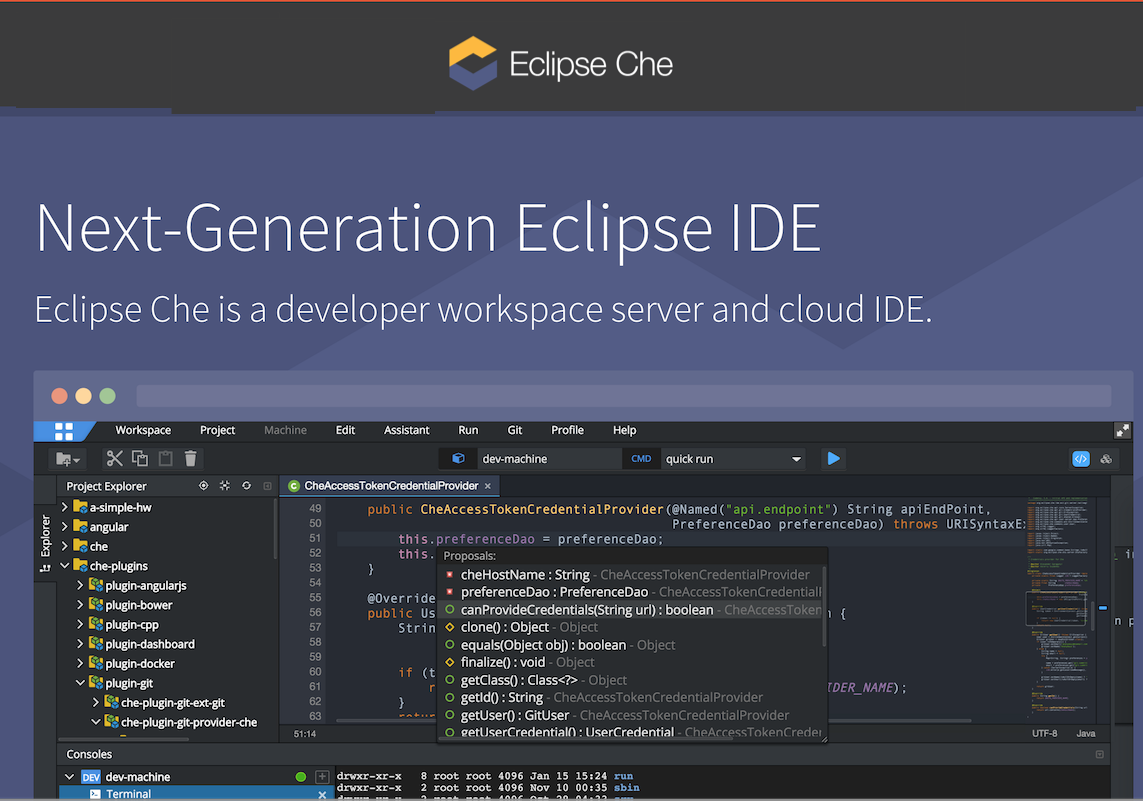A very quick look at Eclipse Che shows a promising concept. I thought let’s have a look. When I’m serious about a technology I take the time to read the documentation before diving in. In this case I wanted to follow the typical journey that most folks take, just dive in, never bother with documentation, upon the first hurdle start complaining like a bewitched mad dog with an exaggerated sense of entitlement – ok, minus the last bit of attitude.
I installed Eclipse Che, easy peasy. Then I fired it up. Oops! I can’t connect to it. The first time ever I couldn’t just use an Eclipse release after installing it. It was time to look under the bonnet. So I did. I saw it’s deployed on Docker… What!? Why!? Ahem, ok, move on. I stopped it, also stopped Docker Machine. Then I manually started Docker Machine, readied the environment, then started Che again. This time I tried http://localhost:8080 and I got in. Cool. Everything looks familiar, except it’s all now in one web browser window.
Time to look back and reflect on what I’ve learned here. The fact I couldn’t connect the first time might have to do with RTFM that I didn’t. Anyway, not a big deal, it took me a couple of minutes.
Nothing much to it, just an IDE inside a web browser. It’s the same old thing, in a new cloak. The most obvious/visible differences I spotted can be depicted in a simple diagram, BEFORE and AFTER.

With Eclipse Che,

I’m oversimplifying, but highlighting the most visible changes. It seems that when we get to modernising our software stack, adding Docker and JavaScript are passage-obligé. So, somehow people think that deploying a Java app on Docker is a better architectural choice than only targeting the JVM? In my case, since I’m using a Mac, which runs OSX, hence requires an extra VM (VirtualBox in my case) in order to run Docker containers, I actually end up with a more complicated stack for just an IDE. I don’t know where this is going. Now trying the IDE.

I haven’t gone further than this. The concept of Developer WorkStation Server can be interesting for pair programming. The Server option is perhaps more appealing. I just wonder why this couldn’t be just a Java App and why Docker was actually necessary.

Leave a Reply